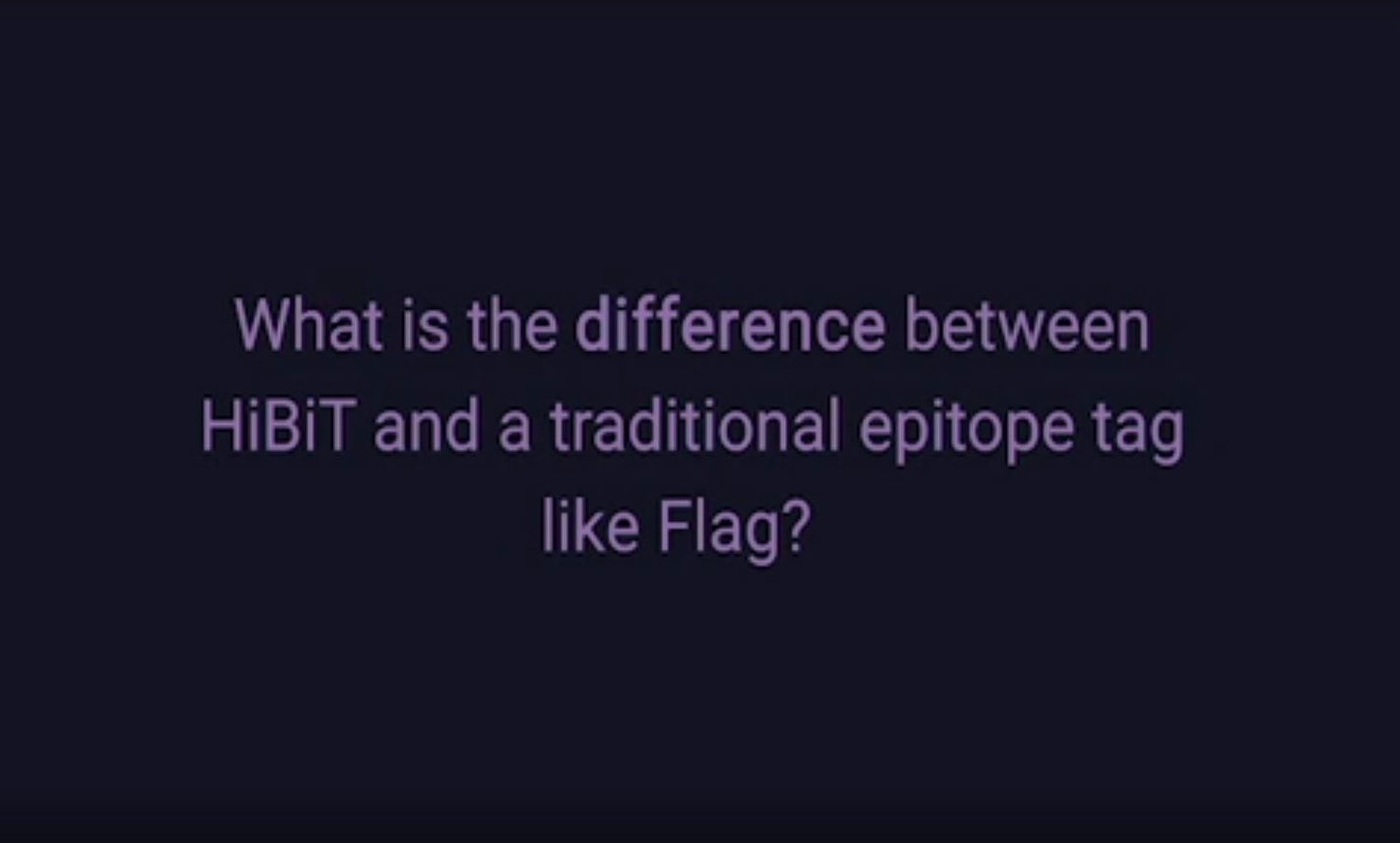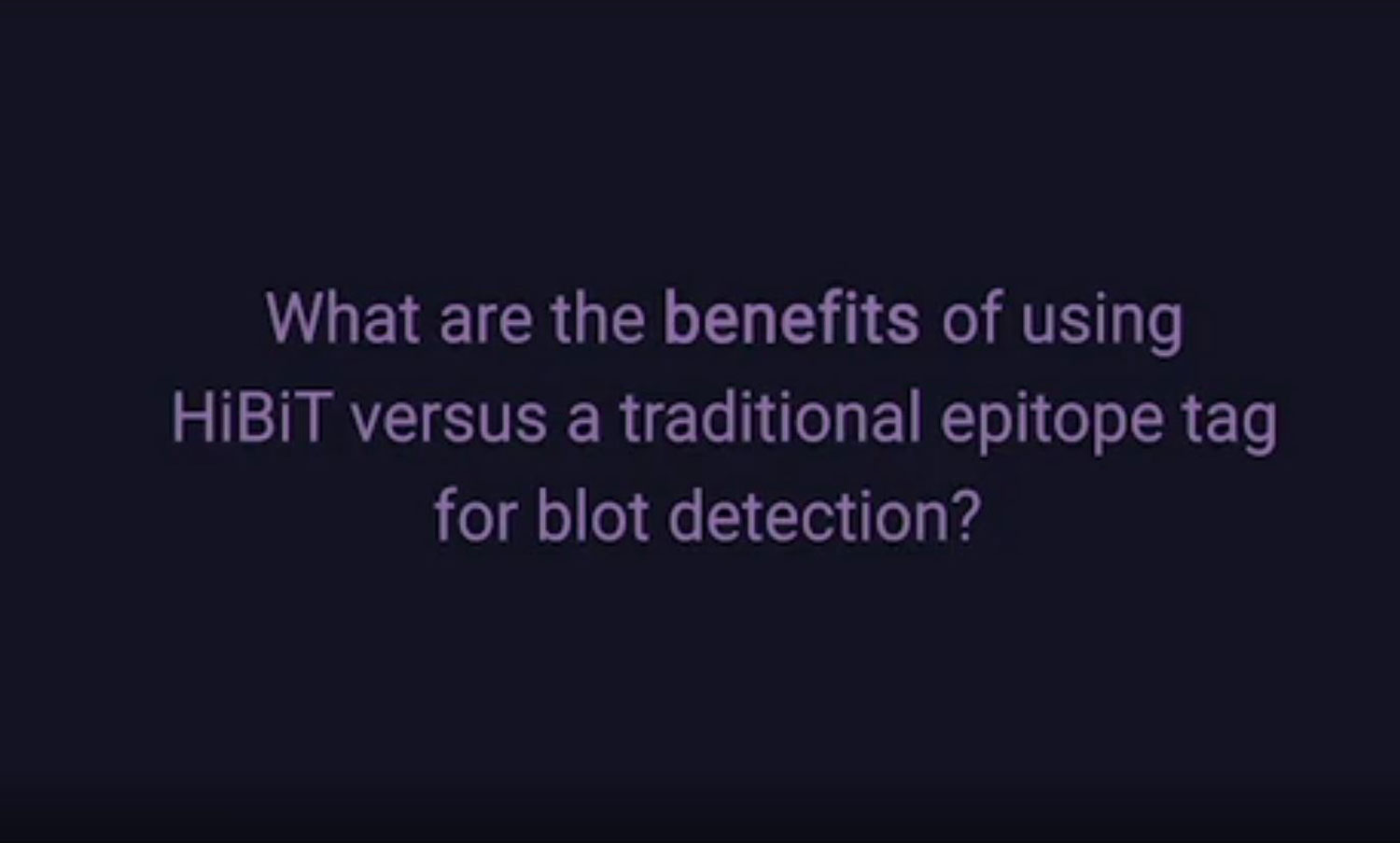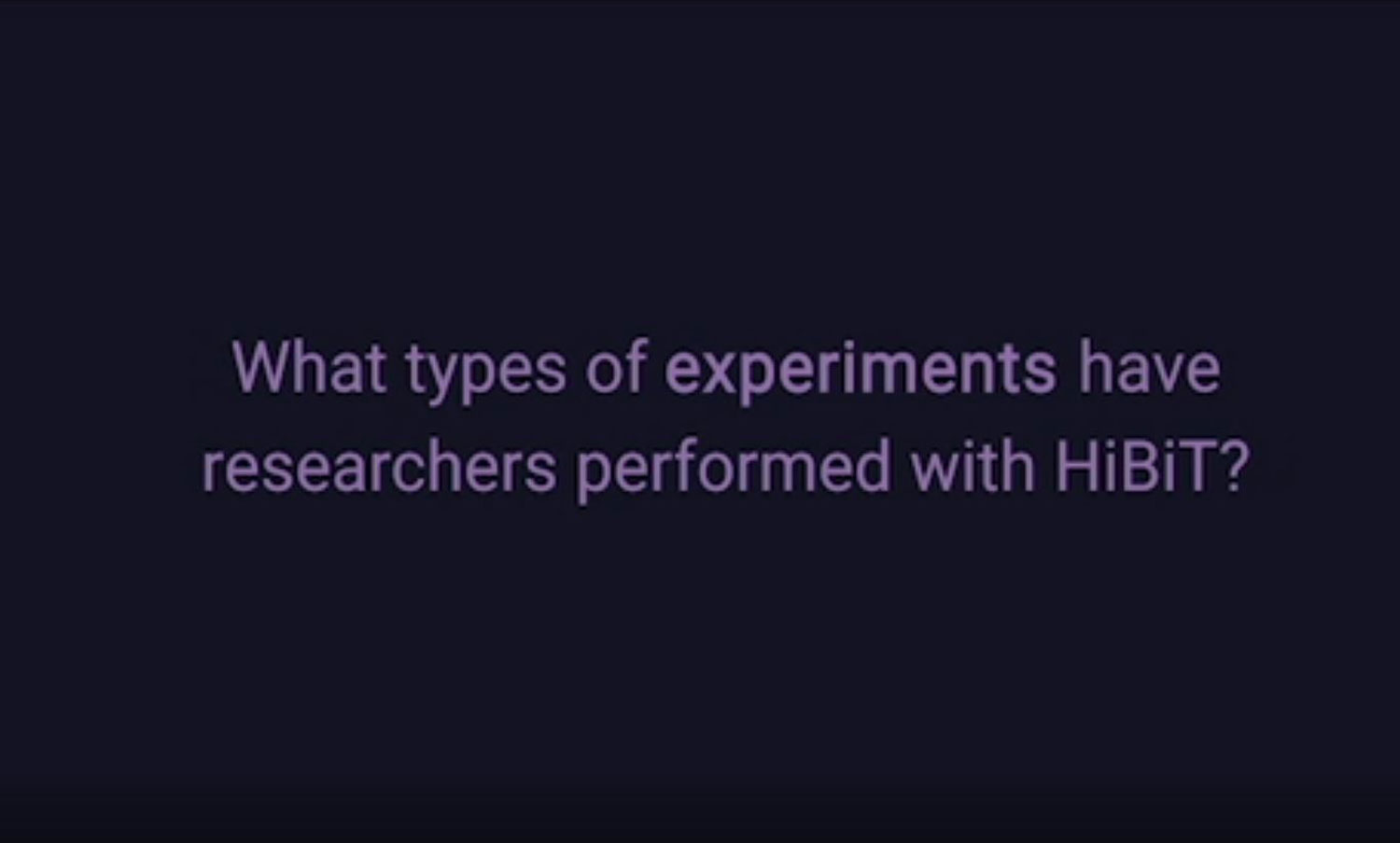HiBiT Tag: Advantages and Comparison
Discover the advantages of the HiBiT tag and compare with other tags like GFP, FLAG® and Myc.
How Does HiBiT Compare With Other Epitope Tags?
HiBiT is an 11-amino acid epitope tag enabling high-throughput, live-cell protein quantification via ultra-sensitive bioluminescence detection. The high-affinity Anti-HiBiT Monoclonal Antibody also enables applications like immunoprecipitation-mass spectrometry at endogenous levels. Read more about the advantages of HiBiT in this article: "HiBiT: A Tiny Tag Expanding Endogenous Protein Detection".
To obtain the HiBiT sequence, you must review the terms and conditions for use.
| Tag | Size | Detection Method | Primary Applications | Key Advantages | Why choose HiBiT? |
|---|---|---|---|---|---|
|
HiBiT |
Length: 11 aa MW: 1.2KDa |
Bioluminescence, enzyme complementation, low picomolar/high-affinity monoclonal antibody |
Total protein quantification, live-cell kinetic quantification, surface/secreted protein quantification, Western blot, flow cytometry, (Co-) immunoprecipitation, immunofluorescence, protein interactions | Ultra-sensitive, high-throughput quantitation, compatible with CRISPR for endogenous tagging, multifunctional, small size, high specificity, high affinity | A compact epitope tag enabling high-throughput, sensitive protein quantitation and traditional antibody-based methods at endogenous levels—simplifying workflows without bulky tags. |
|
GFP |
Length: 238 aa MW: 26.9Kda |
Fluorescence | Protein localization, live-cell imaging, flow cytometry, detection and quantitation | Strong visual for localization in live cells | HiBiT is smaller, quantitative, and has less background with lower risk of disrupting function. |
|
FLAG® |
Length: 8 aa MW: 1KDa |
Antibodies | Immunopurification, Western blot, (Co)-Immunoprecipitation, immunofluorescence, flow cytometry | Small size, many antibodies available | HiBiT offers antibody-free quantitation with a broader application range in live-cell studies. |
|
HA |
Length: 9 aa MW: 1.1KDa |
Antibodies | (Co)-Immunoprecipitation, immunofluorescence, western blot, flow cytometry | Small size, many antibodies available | HiBiT provides higher throughput, quantitative detection, and live-cell applications. |
|
ALFA-tag |
Length: 13 aa MW: 1.4KDa |
Single domain antibodies (VHH nanobodies) | Detection, purification, (Co)-Immunoprecipitation, protein interactions | Small size, high specificity, high affinity | HiBiT is a smaller, highly sensitive tool for accurate quantitation of low-abundance proteins with clean luminescence and minimal background, eliminating the need for SPR or Biacore™ measurements. |
|
Myc |
Length: 10 aa MW: 1.2KDa |
Antibodies | (Co)-Immunoprecipitation, immunofluorescence, Western blot, flow cytometry | Small size, many antibodies available | HiBiT offers superior sensitivity, with quantitative and real-time monitoring. |
Need A High-Sensitivity Alternative to Traditional Tags?
The Anti-HiBiT Monoclonal Antibody detects sub-picogram levels of HiBiT with minimal background, enabling applications like Western blotting, immunoprecipitation, and immunofluorescence. This antibody supports rapid and reliable verification of protein expression, size, and localization, making HiBiT tag an ideal choice for precise and efficient protein analysis.
HiBiT Blotting: Faster and More Sensitive Than Western Blot
The HiBiT Blotting System can transform your workflow with faster, more sensitive protein detection. This application note highlights the advantages of HiBiT technology over traditional Western blotting methods that use epitope tags like FLAG®. With HiBiT, you can achieve higher sensitivity and a superior signal-to-noise ratio, allowing you to get images faster in fewer steps.

HiBiT Is Different from Traditional Epitope Tags
- In traditional Western blotting, you need an antibody to your protein of interest or epitope tag, and a method for detecting that antibody.
- With HiBiT, no antibody is needed, eliminating processing steps and minimizing hands-on time.

Benefits of HiBiT Protein Tagging
- Easy quantitation and detection
- No blocking needed
- No background, unlike antibody-based methods, with HiBiT blotting it doesn't matter if the detection reagent binds non-specifically to the membrane. There will be no luminescent signal except where it has bound to a HiBiT tagged protein.

How HiBiT Tagging Is Being Applied
- Monitoring protein abundance in the cell
- Protein degradation research
- Monitoring receptor internalization
- Inserting and detecting CRISPR knock-ins
